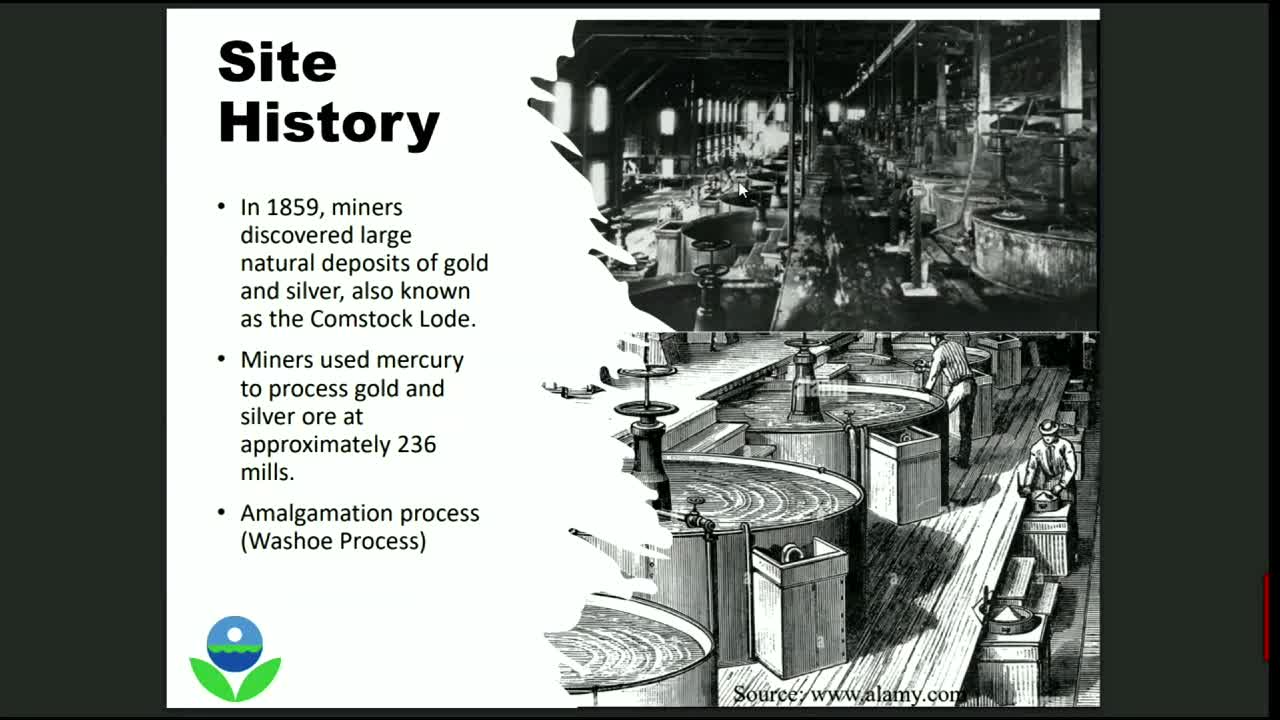EPA tackles massive Superfund site contamination crisis
June 06, 2024 | Carson City, Ormsby County, Nevada

This article was created by AI summarizing key points discussed. AI makes mistakes, so for full details and context, please refer to the video of the full meeting. Please report any errors so we can fix them. Report an error »

In a recent government meeting, officials discussed the ongoing environmental challenges and remediation efforts at a Superfund site in Nevada, which has been a concern since its designation in 1990. The site, the only National Priorities List (NPL) site in the state, has a history of mercury contamination due to historical mining practices that released over 14 million pounds of mercury into the environment.
The Environmental Protection Agency (EPA) has divided the site into two Operable Units (OUs) to manage contamination more effectively. OU1 focuses on the source areas, including mills and tailings, while OU2 encompasses the rivers and associated water bodies. The identified risks include potential developmental issues for children playing in contaminated yards and health concerns for those consuming fish from affected waters.
Recent efforts have included a $5 million allocation under the Bipartisan Infrastructure Law aimed at cleaning up residential yards in targeted neighborhoods. Sampling conducted in the Empire Ranch development revealed no contaminants exceeding action levels, although only seven out of approximately 20 homes agreed to participate in the sampling.
The meeting also highlighted a significant issue regarding the intersection of Superfund status and disaster relief funding. Officials expressed concerns that FEMA disaster mitigation funds are not available for counties within Superfund areas, complicating recovery efforts after natural disasters. The EPA is currently in discussions with FEMA to address these conflicts and improve access to necessary funding for mitigation projects.
Community members raised questions about the testing of public areas, such as local golf courses, and the need for ongoing monitoring and sampling to ensure public safety. The EPA acknowledged the necessity of further testing and committed to providing updates on future sampling plans.
As the cleanup process continues, officials emphasized the importance of protecting human health and the environment, despite the challenges posed by the site's extensive contamination and the absence of responsible parties for remediation. The timeline for finalizing the interim Record of Decision (ROD) is expected by early next year, with ongoing public engagement and stakeholder interviews planned as part of the process.
The Environmental Protection Agency (EPA) has divided the site into two Operable Units (OUs) to manage contamination more effectively. OU1 focuses on the source areas, including mills and tailings, while OU2 encompasses the rivers and associated water bodies. The identified risks include potential developmental issues for children playing in contaminated yards and health concerns for those consuming fish from affected waters.
Recent efforts have included a $5 million allocation under the Bipartisan Infrastructure Law aimed at cleaning up residential yards in targeted neighborhoods. Sampling conducted in the Empire Ranch development revealed no contaminants exceeding action levels, although only seven out of approximately 20 homes agreed to participate in the sampling.
The meeting also highlighted a significant issue regarding the intersection of Superfund status and disaster relief funding. Officials expressed concerns that FEMA disaster mitigation funds are not available for counties within Superfund areas, complicating recovery efforts after natural disasters. The EPA is currently in discussions with FEMA to address these conflicts and improve access to necessary funding for mitigation projects.
Community members raised questions about the testing of public areas, such as local golf courses, and the need for ongoing monitoring and sampling to ensure public safety. The EPA acknowledged the necessity of further testing and committed to providing updates on future sampling plans.
As the cleanup process continues, officials emphasized the importance of protecting human health and the environment, despite the challenges posed by the site's extensive contamination and the absence of responsible parties for remediation. The timeline for finalizing the interim Record of Decision (ROD) is expected by early next year, with ongoing public engagement and stakeholder interviews planned as part of the process.
View full meeting
This article is based on a recent meeting—watch the full video and explore the complete transcript for deeper insights into the discussion.
View full meeting